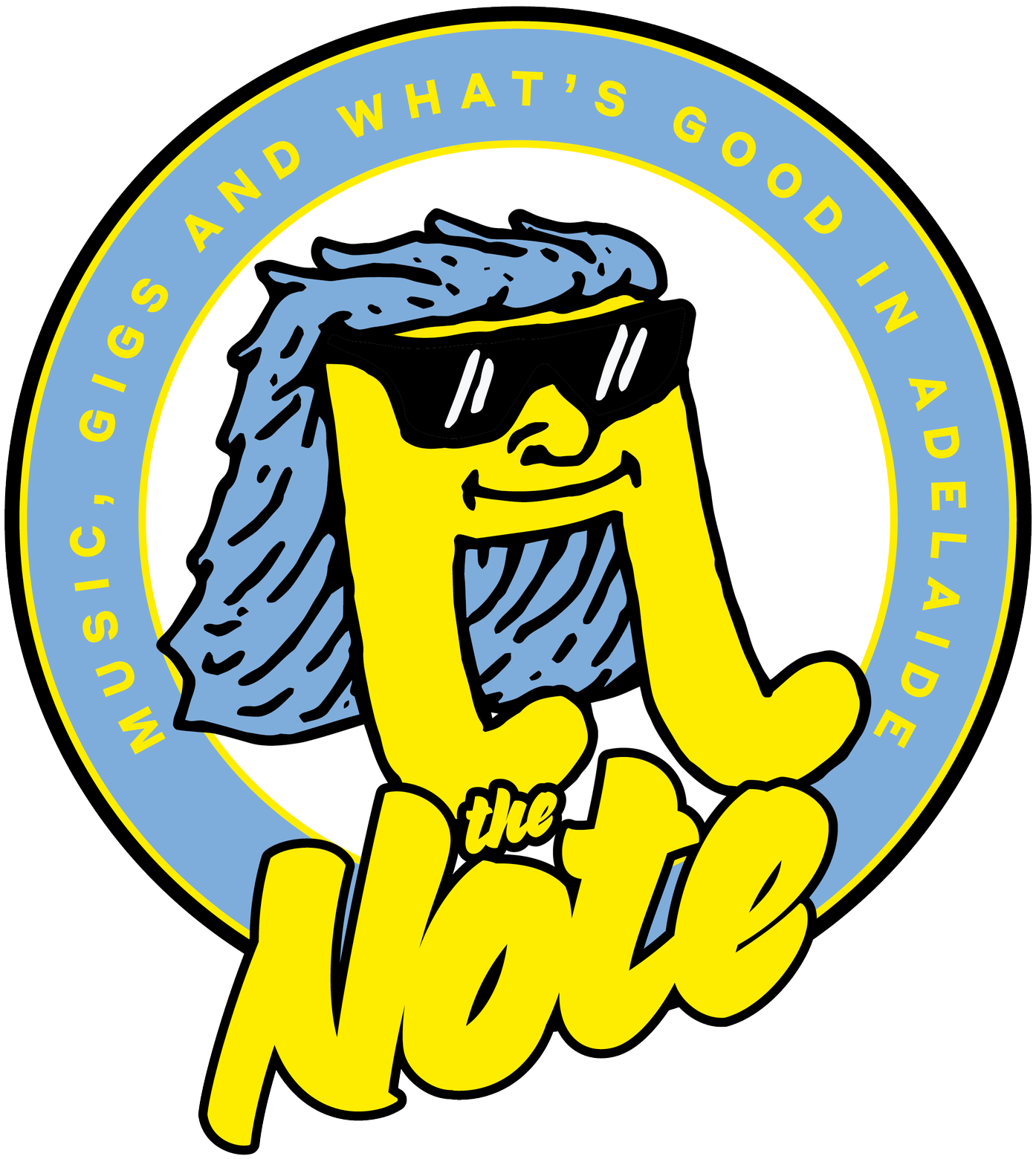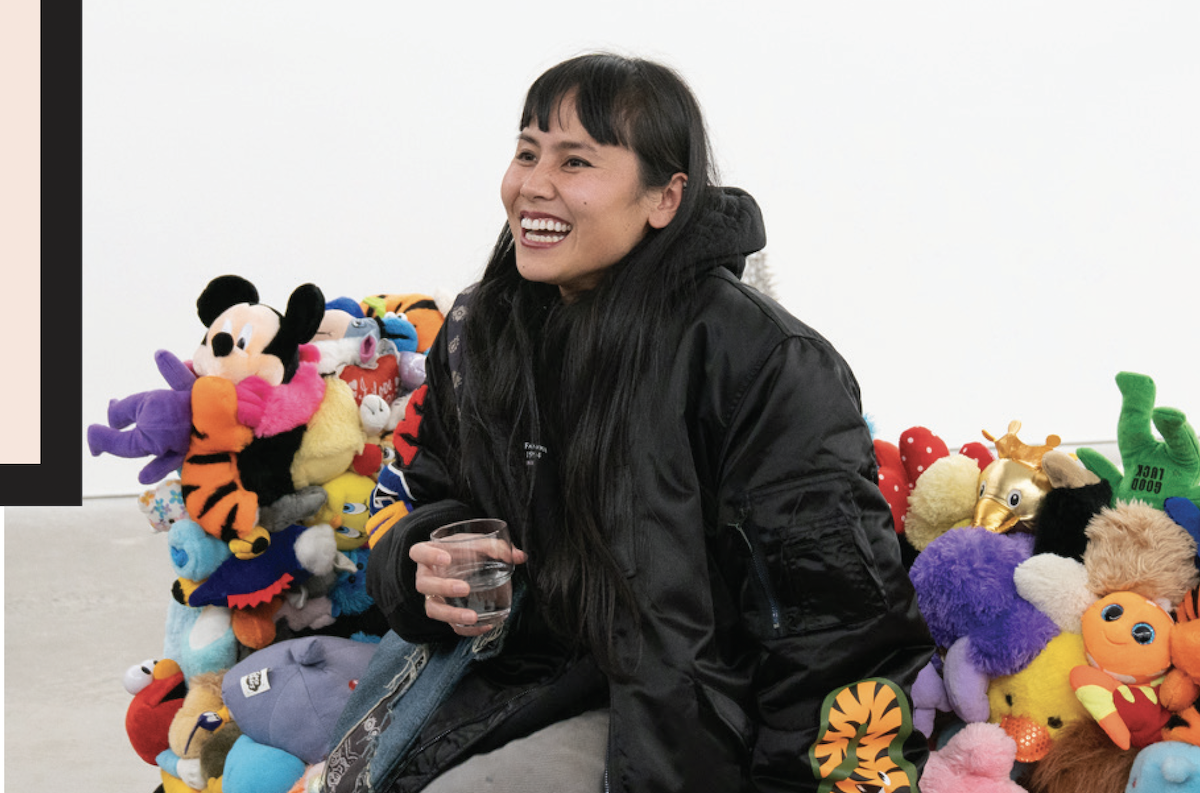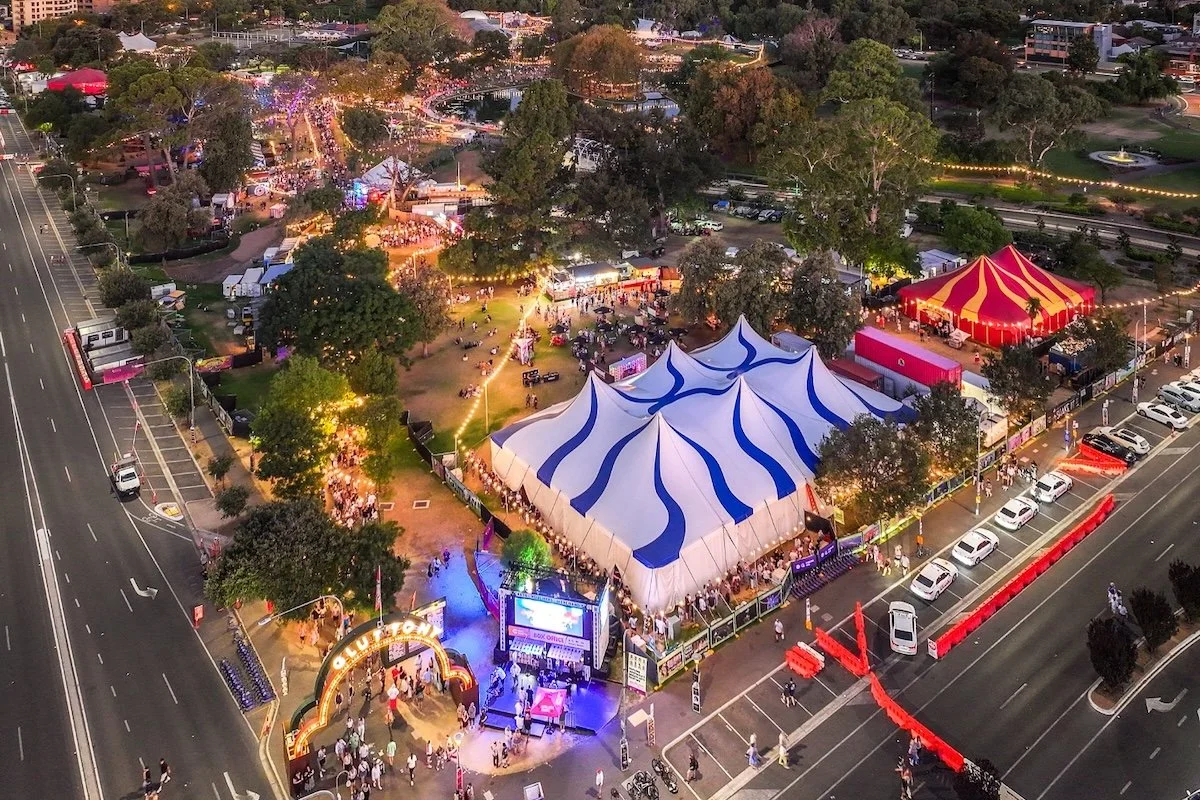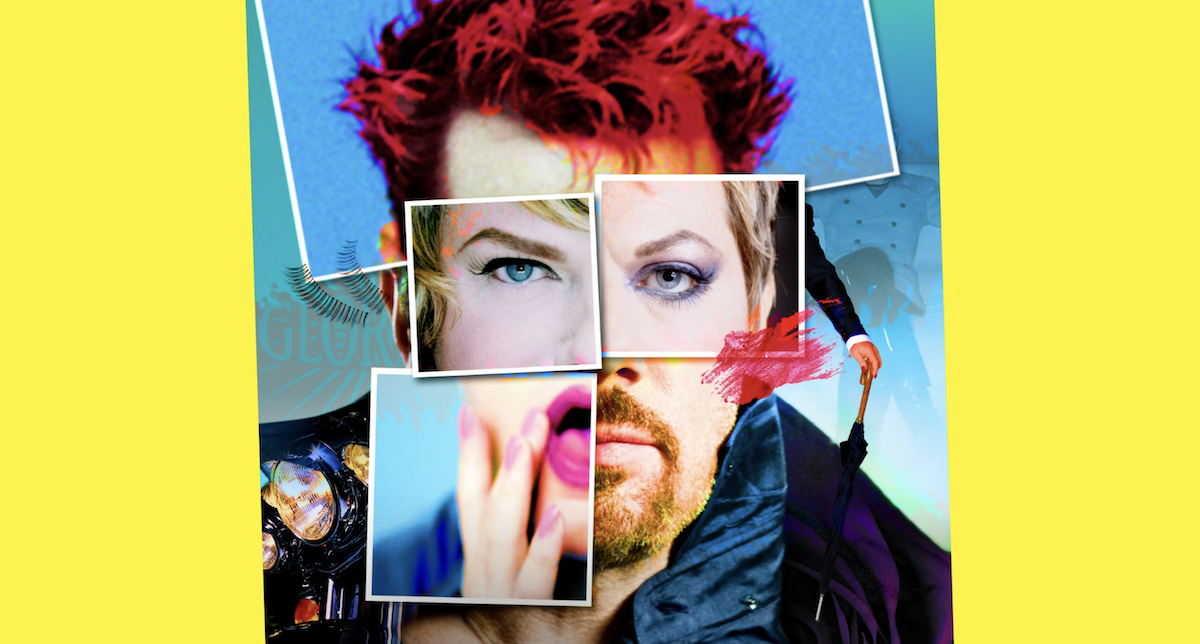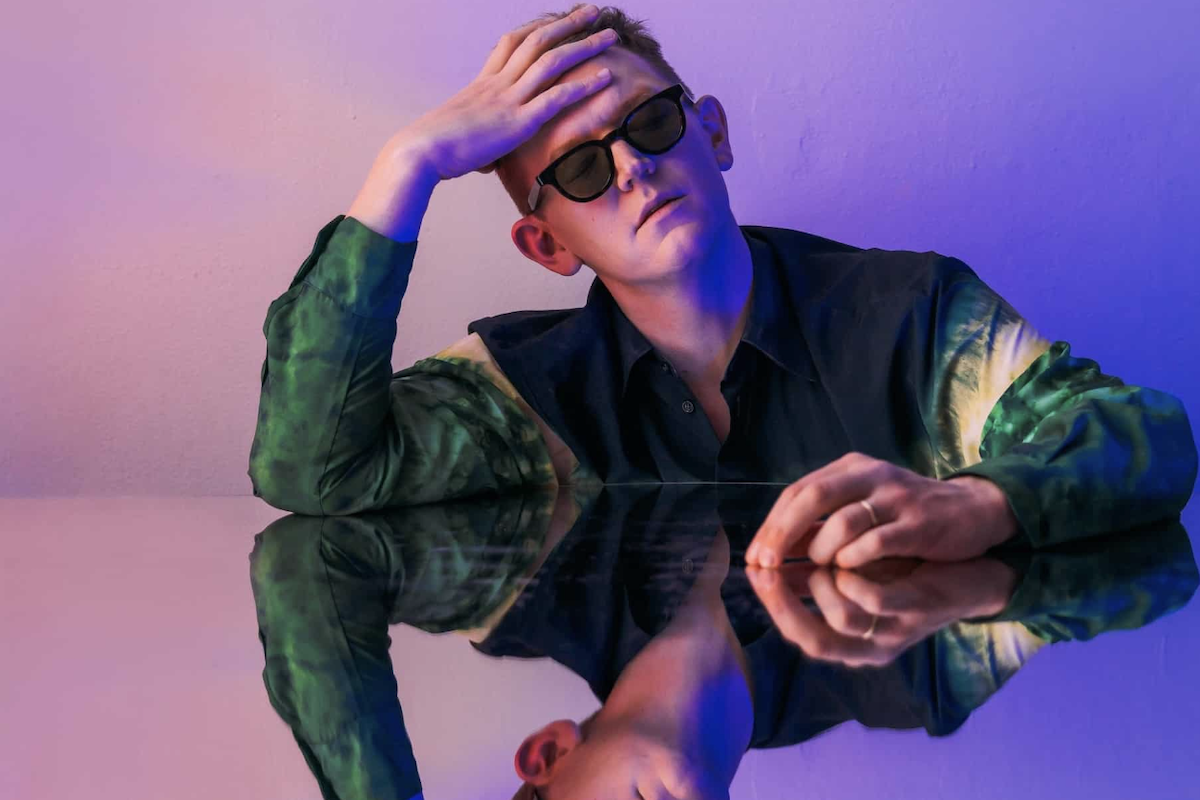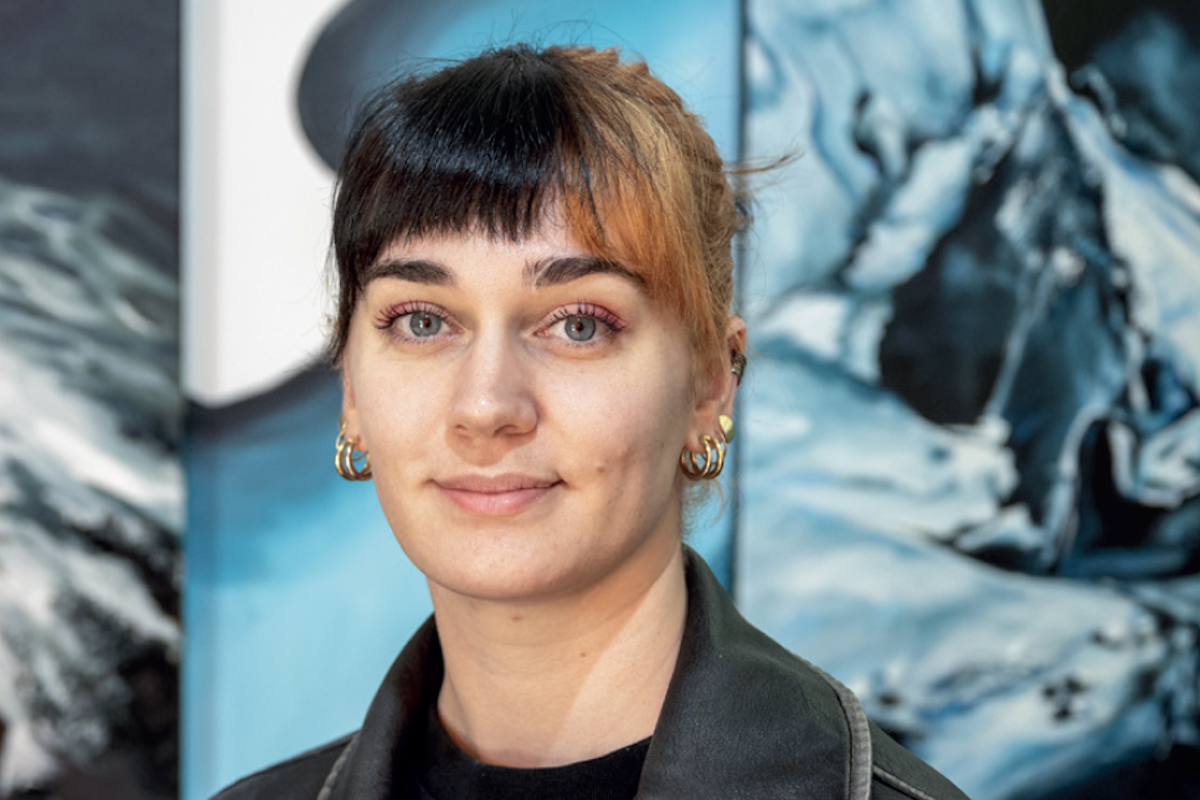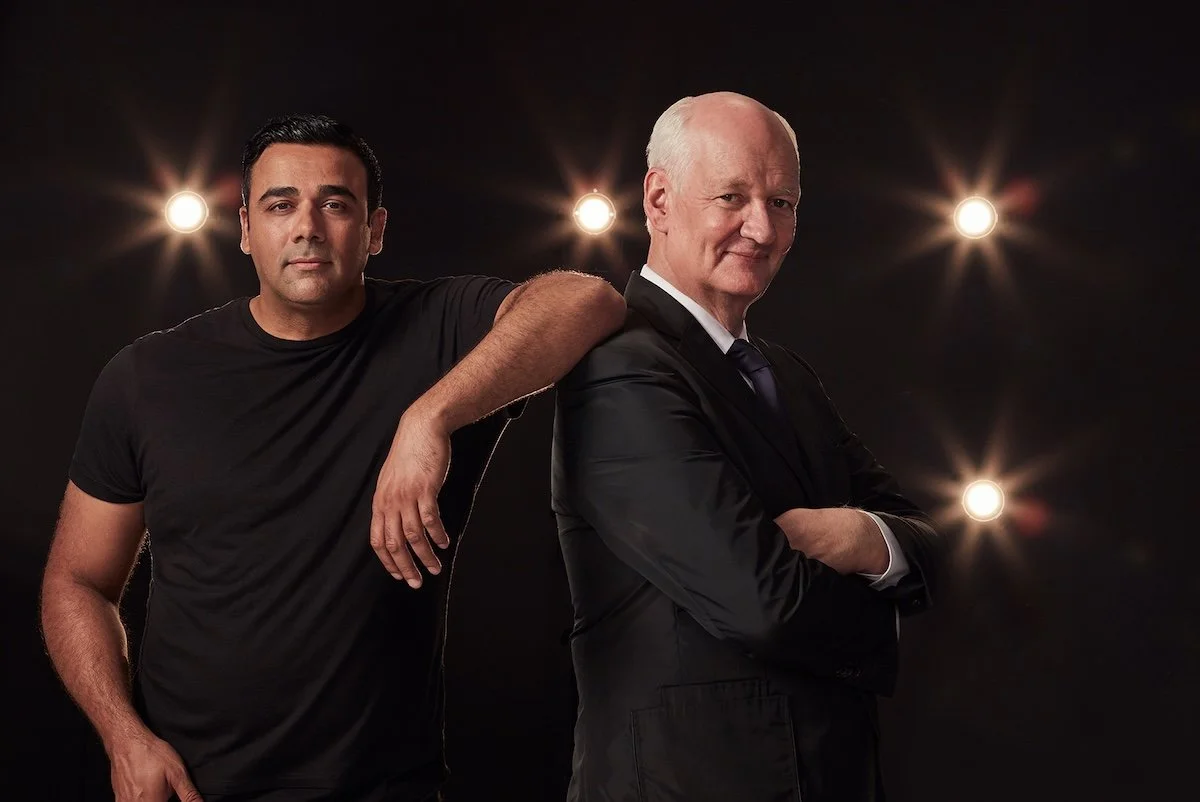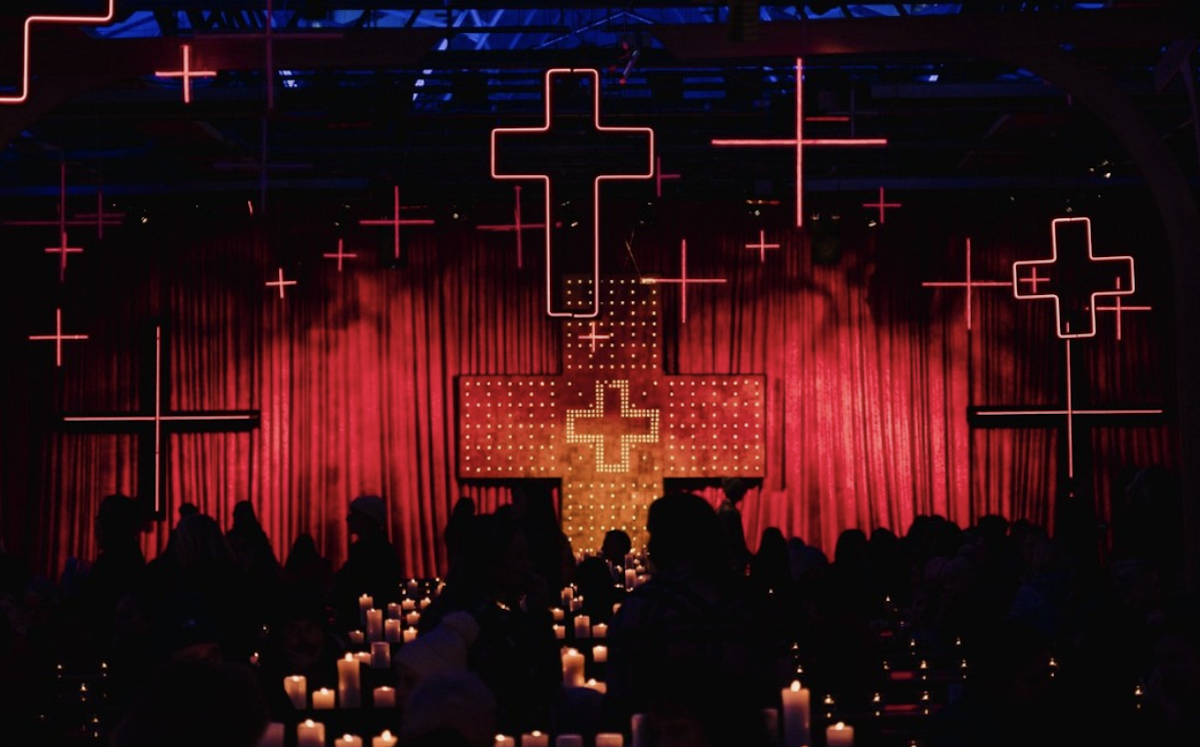Art You Can Hold: Reflections on short snarl’s EP Launch
Emerging artist short snarl celebrates the launch of their debut EP with an arts market/exchange that praises tangibility.
Words by Emily Wilson | Images by Hamish Gibson-Smith
Artists are sipping takeaway coffee from sepia-stained paper cups and munching on last-minute snacks from the nearby Greek pastry shop as tables are being draped in patterned cloths in every corner of interim studios.
The CBD’s largest recording studio facility looks a little different today. It’s preparing for an arts market exchange, hosted by Thea Martin to promote the release of their debut solo project, short snarl, and EP, Gossamer Songs, in collaboration with Runt Records. Released on Bandcamp on June 13 (and on all streaming platforms a day later), the record is a collection of four fragile songs couched in delicate guitar work and whisper-soft drumbeats. It’s a highly-anticipated project by Thea, who is known for their involvement as a violinist in a variety of genre-diverse Adelaide bands such as Twine, War Room, Wake in Fright, Cagefly and more. “I feel that I have things that I want to say and share now,” the artist disclosed last year when I asked why they were finally ready to release their own music. “Maybe in the most meaningful way up until this point.”
This launch party-cum-gig-cum-market exchange has been a drawn-out labour of love. Thea first approached Runt Records in January, keen on their support to help organise the event. “I was very excited because I love their work,” Thea says.
Runt Records is managed by Bella Veith and Lilith Malloy, who are sitting in the control room with me and Thea as we discuss the hands-on process of organising this event. The pair both appear in punk bands – a particularly male-dominated sector of the industry. Fostering safe spaces and inclusivity behind the scenes is what drives the independent events collective based on Kaurna land. “Our main goal or ethos is to create safe spaces for women and gender non-conforming artists, technical staff and audiences,” Bella says, whose shaved head is illustrated with big black stars, drawn on with a marker.
“It isn’t only musicians who need visibility,” adds Lilith with a flip of their hot pink and tangerine-streaked hair.
Thea chimes in: “So much of the push for gender inclusivity in the music scene has still just been about representation in a visual sense.” They suggest that event producers often think, ‘It’s ok if we have someone onstage who ticks this box…’. “But it’s not actually changing the culture,” they continue. “So, I think it’s very cool to be working with people who are committed to that, and hopefully this event will be that.”
Inside interim studios, creatives are beginning to organise their work. There’s a range of art on offer: stacks of CDs, hand-painted coasters, elaborate prints and handmade zines, poetry booklets, embroidered caps, tattoo vouchers, stickers, band T-shirts and bandannas, friendship bracelets, upcycled clothing, albums on vinyl, framed photographs and paintings, handmade birthday cards, intricate temari balls, and more –all created and provided by femme or gender non-conforming artists.
The nature of this market exchange emphasises the importance of art in tangible forms in our increasingly digitised world – a world where people listen to music through Spotify and look at paintings on their phones.
I have my own stall set up at the event, selling collections of my substack articles bound together to form a handmade zine. The process of printing, hole punching and slicing up paper, glueing together covers, and tying the booklets up with ribbon was reminiscent of kindergarten arts and crafts – soothing and grounding. Thea feels the same when they’re able to work quietly with their hands: “I think being able to hold the art that you’ve made and for other people to be able to hold it in their hands is so special.”
I put it to Thea that it seems the conceit of their EP launch and market stems from the idea that art one can hold in their hands is incredibly important. The violinist is adding the finishing touches to the table where people can purchase CDs their Gossamer Songs EP.
“I’m just so passionate about DIY culture, and I think, particularly in the music industry, there’s such a move away from that – [that], or we’re being told there’s a move away from that by corporate interests,” they explain. “There’s no reason that advances in technology need to take away from that. Both can coexist. I think making things is such an important part of how people find their feet as emerging artists.” They break out in a soft laugh. “And I like CDs! I can put them in my shit little car. And that’s super important.”
The proliferation of streaming services today is of course valuable in increasing accessibility for many artists and allowing people to experiment with listening to new sounds. “But I think prioritising that and telling artists that it’s the only way to have a viable career is not true,” Thea says. “Not every artist dreams of international success or needs that. Communities need artists. That has been the case for a long as humans have been around. So doing things locally and doing things on a small scale, I think, is incredibly important.”
Bella brings up another point. “With having CDs to sell… it’s validating in a very different way to putting music out on streaming platforms because you know people want it, which I think is really nice.” Physical ownership, they suggest, is a gesture of faith and appreciation in a deeper and more meaningful way. It’s harder to know if people are truly engaging with your work on streaming platforms – everything feels different. “If someone takes the time to want to have a CD, it means a lot more.”
In the entryway of Interim, I find Alicia Salvanos, who worked with Thea on the cover design for the Gossamer Songs CDs. A multidisciplinary artist who works under the moniker Scratchyyyy, they have set up their own stall brimming with band merch, handmade zines, flash designs and vouchers for their own tattoo practice.
As they neatly fold up the t-shirts they designed for noise-rock band Twine (which Alicia also plays bass in), they say, “I realised you can just make merch if you want to. And I’ve been slowly learning how to sell things.”
Alicia talks me through the process of putting together the cover for Thea’s CDs: driving around the Hills, snapping photographs in graveyards and under bridges on the hottest day of the year. They are proud of having helped Thea bring this vision to life – to help them arrive at a point where they can hold their own songs in their hands.
“I am a big fan of tangible art,” Alicia says. “I think there’s a lot more of an experience in it…you feel a lot more connected to other people…there’s so much you miss out on from things being merely online or two-dimensional.”
short snarl guitarist and Wake in Fright frontman Sam Wilson (who also happens to be Thea Martin’s partner) overhears us discussing the importance of tangible art and offers his opinion on the perilous modern landscape of artmaking in the digital age.
“As soon as corporations realised they could make art with 1s and 0s, it meant they could pay less for it, and they could take it out of the hands of the people who made it,” he explains. “I think being able to make something you can hold in your own hands means that it feels real and valid to you, but also other people. It makes people feel like they can be a part of your work. Having someone’s record or having someone’s painting feels different to liking it on Spotify. It makes you feel a part of the process in a way that I think is more conducive to lasting engagement and connection with an audience.”
I’m sitting on a couch now that has been set up on the street (something most artists congregate around for their frequent smoke breaks), next to Thea’s drummer, V Maousopoulous. I’ve switched off my recording to quickly have lunch before people start to arrive at the launch, but Sam comes running back to me with one more thing to say.
“I think a lot of people sort of implicitly believe that the internet is going to exist forever,” he says. “[But] I think it’s a lot more tenuous than we think. We lose films, we lose music, and we lose art all the time because the people that are supposed to be custodians of those things – corporations, labels, [or] whatever – don’t actually care about the preservation of it. The only people who will preserve art are other artists and audiences. And bringing the audiences into that preservation is crucial to the longevity of the art form in any capacity.”
People begin to buzz with anxiety, wanting everything to happen smoothly, wanting the event to be a success. But it’s a gentle space: to soothe nerves, people are offering each other peppermint tea, antihistamines, and hugs.
I ask Hamish Gibson-Smith, who co-owns and co-manages interim studios (and who is currently operating the square system at the door so people can pay their $5 entry fee), how he’s feeling. He seems pretty relaxed – Thea and Runt Records were reportedly extremely organised, which made his role slightly more simple. That, and he’s keen for the event to begin: “To have all these artists coming together – to trade and sell – it’s pretty good.”
Sitting behind a table spread with my handmade zines, I start to feel nervous. If people don’t like my art today, it will feel extra personal because this time, it is art that has come directly from my hands. But as Bella mentioned before, it also means that if people choose to engage with my art today, it will mean even more.
Bella and Lilith start to usher some of their friends - whose faces are all studded with jewellery - into the studio. Lilith, donning a spiked leather wristband and a black collared shirt with a brooch clasped at their throat, excitedly says to these septum-pierced new adults, “I feel like a priest-cowboy!”
More than eighty people attend the market and launch. People mill around the tables, flocking to their favourite prints, toying with handmade jewellery and calling their friends over to show off freshly purchased band tees. I trade some of my zines for a Runt Records t-shirt, a Keeskea vinyl (who is opening for Thea), and a poetry booklet penned by Miranda Bede that’s decorated with soft, bleeding, hand-painted covers. Profit isn’t what’s being measured here –instead, engagement and genuine enthusiasm are the currency.
The day -- which is long -- culminates in music. After two opening acts (Sash and Keeskea), short snarl –consisting of V Marousopoulos, Sam Wilson, and, of course, Thea Martin – set up to play in the recording booth at the back of the studio. All the people who have stopped by to watch sit cross-legged on the carpeted floor, like kindergarten children waiting for the next chapter of a storybook to be read to them. Thea starts to sing, their voice papery and pulsing.
After the set, I ask V – the fingers and mind behind Gossamer Songs’ steady, assertive drumbeats – how art they can hold makes them feel. They tell me it’s really quite simple. “It makes me feel real and human. That’s what’s important about it. That’s what art is about: it’s comforting, it’s emotional. What else is there to say?”
Gossamer Songs is out now via caps lock records! You can listen to it on all streaming platforms, including short snarl’s bandcamp. Stay up to date with Runt Records events via Instagram.
